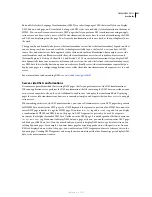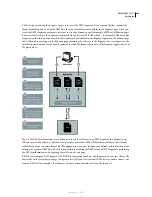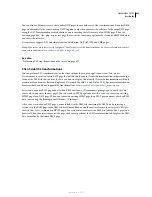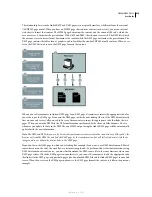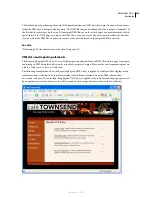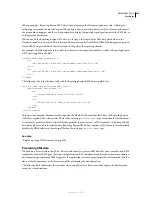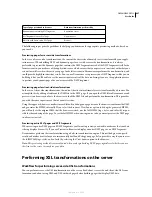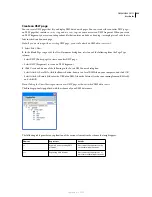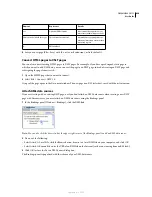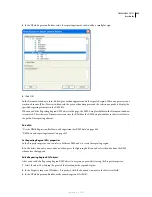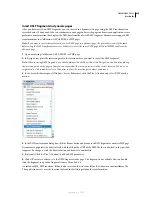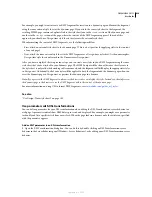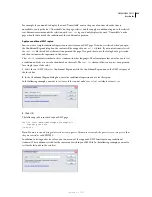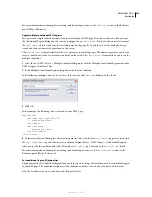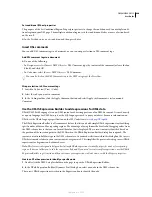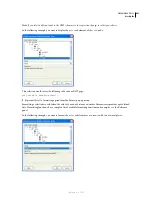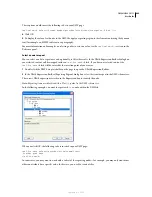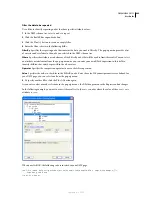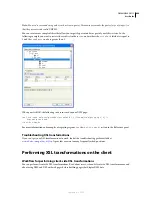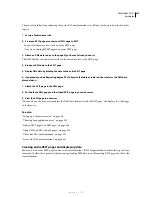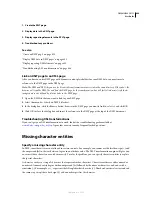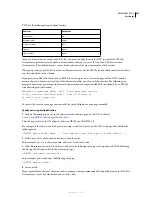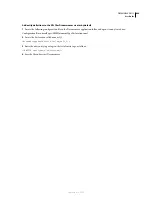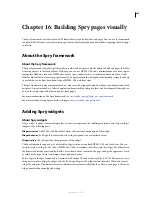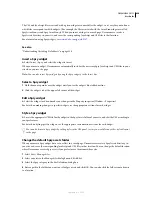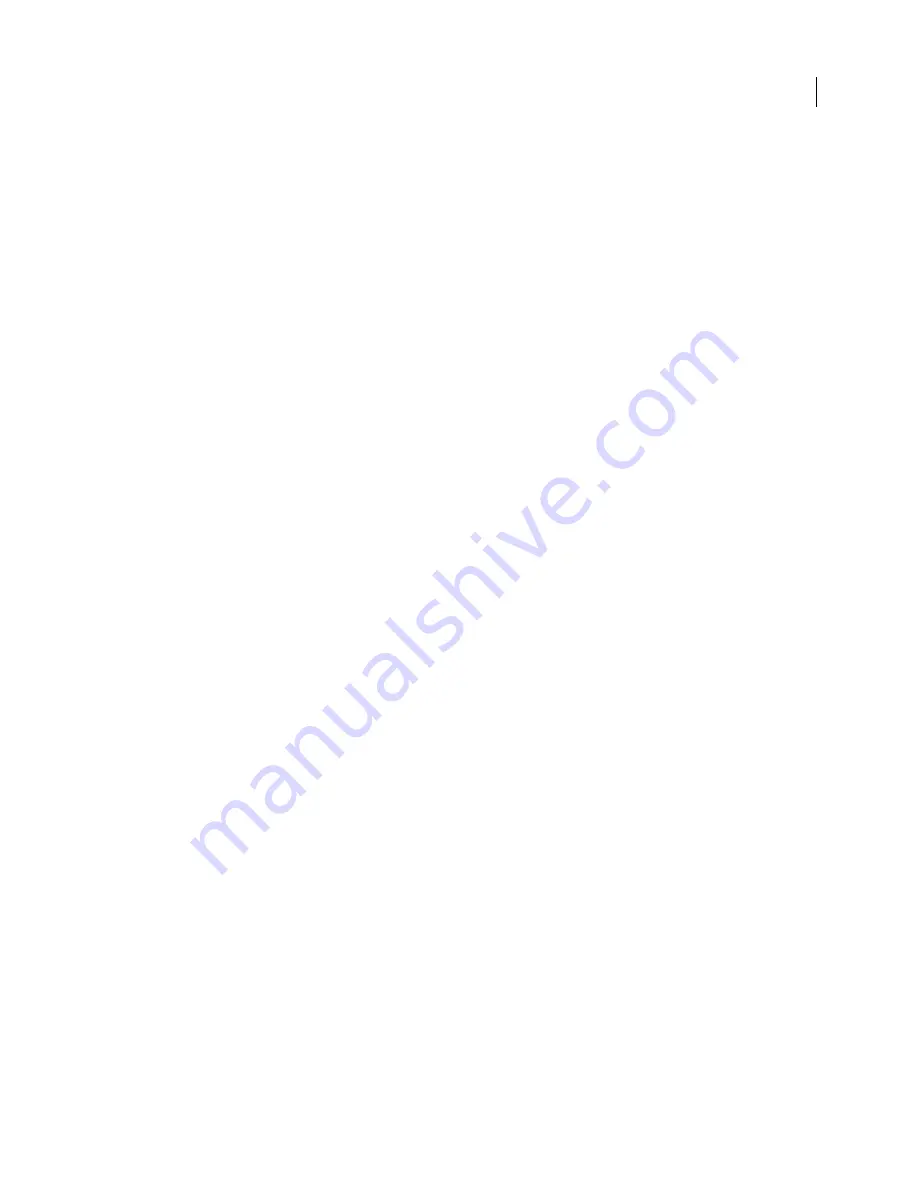
DREAMWEAVER CS3
User Guide
435
7
Upload the dynamic page to your server (Site > Put) and click Yes to include dependent files. The file containing
the XSLT fragment, the XML file containing your data, and the generated run-time library file must all be on the
server for your page to display correctly. (If you selected a remote XML file as your data source, that file must reside
somewhere else on the Internet.)
See also
“Create an XSLT page” on page 429
“Server-side XSL transformations” on page 421
Delete XSLT fragments from dynamic pages
You can remove an XSLT fragment from a page by deleting the XSL Transformation server behavior used to insert
the fragment. Deleting the server behavior deletes the XSLT fragment only—it does not delete the associated XML,
XSLT, or run-time library files.
1
In the Server Behaviors panel (Window > Server Behaviors), select the XSL Transformation server behavior that
you want to delete.
2
Click the minus (-) button.
Note:
You should always remove server behaviors in this fashion. Manually deleting the generated code only partially
removes the server behavior, even though the server behavior may disappear from the Server Behaviors panel.
Edit XSL Transformation server behaviors
After you’ve added an XSLT fragment to a dynamic web page, you can edit the XSL Transformation server behavior
at any time.
1
In the Server Behaviors panel (Window > Server Behaviors), double-click the XSL Transformation server
behavior that you want to edit.
2
Make your changes and click OK.
Create a dynamic link
You can create a dynamic link on your XSLT page that links to a specific URL when the user clicks a specified word
or group of words from your XML data. For full instructions, see the Dreamweaver errata at
www.adobe.com/go/dw_documentation
.
Applying styles to XSLT fragments
When you create an entire XSLT page (that is, an XSLT page that contains
<body>
and
<head>
tags), you can display
XML data on the page and then format the data like any other piece of content using the Property inspector or the
CSS Styles panel. When you create an XSLT fragment for insertion in a dynamic page, however (for example, a
fragment for insertion in an ASP, PHP, or Cold Fusion page), the rendering of styles in the fragment and in the
dynamic page becomes more complicated. Although you work on an XSLT fragment separately from the dynamic
page, it is important to remember that the fragment is intended for use within the dynamic page, and that the output
from the XSLT fragment ultimately resides somewhere within the
<body>
tags of the dynamic page. Given this
workflow, it is important to make sure that you do not include
<head>
elements (such as style definitions or links to
external style sheets) in XSLT fragments. Doing so will cause the application server to place these elements into the
<body>
of the dynamic page, thereby generating invalid markup.
September 4, 2007

